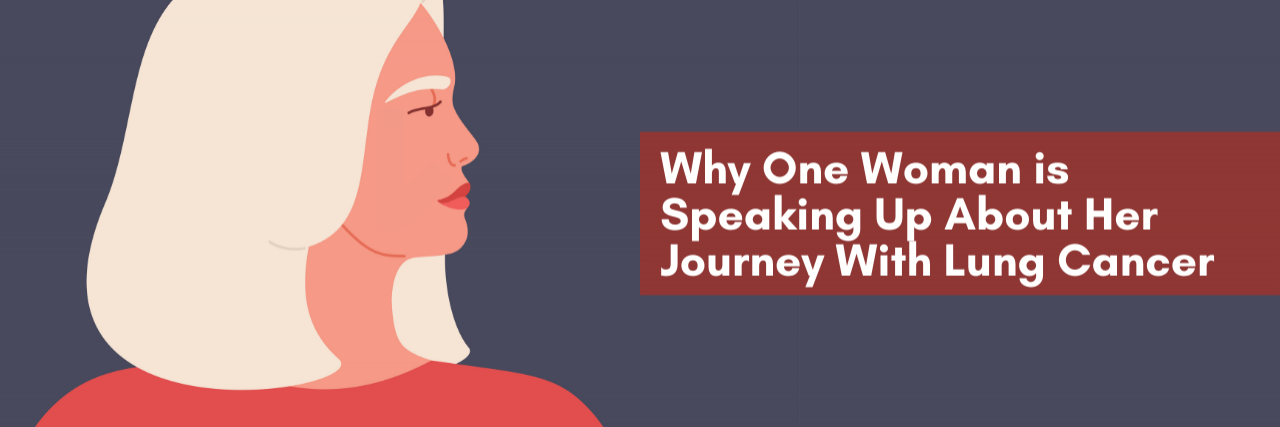Heidi’s life changed forever at the age of 55. It started with a familiar twinge on her lower left side, reminiscent of the ovarian cysts she had experienced throughout her life. Given her age and medical history, she decided to make an appointment with a gynecologist.
She was able to get an ultrasound at that very first appointment, and it revealed a six centimeter cyst on her left ovary. A follow-up test didn’t find anything too alarming, but the gynecologist still wanted to follow up with a computed tomography (CT) scan just in case.
The result of the scan shocked her. While it ruled out the possibility of ovarian cancer, it did show an abnormal mass in her lung. A positron emission tomography (PET) scan later confirmed she had a mass in the upper left lobe of her lung and enlarged lymph nodes between her chest and both lungs. She was diagnosed with Stage IIIA non-small cell lung cancer.
Heidi is not alone. Lung cancer is the leading form of cancer death in the U.S., but many people don’t consider receiving this diagnosis if they are a non-smoker. Non-small cell lung cancer, the type Heidi was diagnosed with that day, makes up 80 to 85% of all lung cancer cases. For Heidi, this news came seemingly out of nowhere. As a health education and fitness trainer, staying fit and eating clean were huge parts of her life. She had never smoked, and she wasn’t experiencing respiratory symptoms. That’s why it’s so important for everyone who is eligible to get evaluated for lung cancer. Plus, individuals with non-small cell lung cancer who are diagnosed earlier may have more treatment options available to them, which may lead to better outcomes.
The prognosis after her initial diagnosis seemed grim. Her pulmonologist actually told her to get her affairs in order. As cancerous cells grow they can spread to other parts of the body, so she was told to immediately make a follow-up magnetic resonance imaging (MRI) to see if the cancer had spread to her brain. She was terrified.
Heidi was able to get an appointment that day, but about 50 miles away in Boulder, Colorado. She and her husband jumped in the car and made their way there immediately.
In the morning, they were given the good news — she did not have any metastases (meaning secondary growths) in her brain. The couple went from their lowest low to pure elation, and for the first time since hearing the news, Heidi actually felt some hope she would make it through.
The majority of tumors found in people with Stage III lung cancer are determined to be unresectable, which means the cancer cannot be removed with surgery. Heidi’s oncologist informed her that she may be a good candidate for chemoradiation therapy followed by immunotherapy. Immunotherapy may be a treatment option for patients after chemoradiation therapy is complete and their disease does not progress. Knowing the initial course of treatment made her feel a little more in control.
As chemoradiation therapy started, Heidi’s support system became especially important to her. The emotional toll of cancer was difficult on her family, but when she finally started telling people about her diagnosis, it was the misconceptions surrounding lung cancer that hurt her the most. She was never greeted with, “I’m so sorry;” the first comment was always, “I didn’t know you were a smoker.”
A month later, there was good news. The day before Thanksgiving, her radiation oncologist approached her. “I generally don’t show people these, because there usually isn’t a lot to see, but there’s something I’d like to show you,” he said. He took her back to his computer and showed her that her tumor was responding well to chemoradiation therapy. After that, she started walking with her head a little higher, and loved showing photos of the scans showing progress to her clients.
She finished chemoradiation therapy around Christmas time, and it was time to start thinking about the upcoming immunotherapy. She asked her oncologist if she could travel during her treatment, and was given the OK. With her family, she made a plan.
Her wish list was simple. She wanted to spend time with her three kids, her husband and the people she cared about the most. And that meant traveling. She worked with her doctor and care team to prepare for travel. Although she had to take precautions, as soon as she arrived at her destination, she was able to relax and focus on spending time with her family and kids.
Like many people, before her diagnosis, Heidi believed lung cancer was a “smoker’s disease,” and never thought to get evaluated for lung cancer.
According to the CDC, about 10-20% of lung cancers happen in people who have smoked fewer than 100 cigarettes in their lifetime — including people who have never smoked at all. Due to people’s misconceptions around the disease it took Heidi 10 months to go public about her diagnosis on social media. However, the more she’s learned about the statistics, the more she has felt the need to speak up.
Heidi also shared that if someone approached her afraid they might be experiencing an early sign of lung cancer, she would tell them to make an appointment with their doctor, and to keep in mind they might need to advocate for themselves in order to get evaluated. She would also let them know there is hope. She knows because she is living proof of that!
US-59173 Last Updated 11/21


